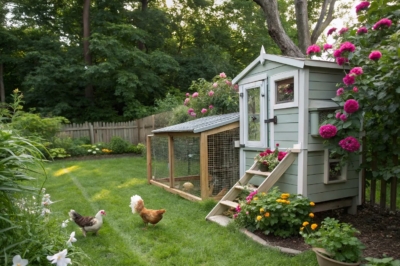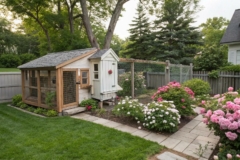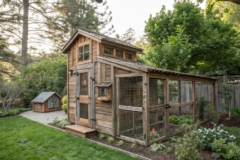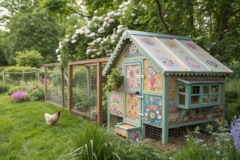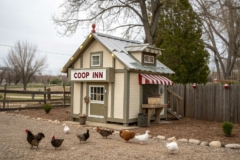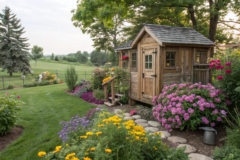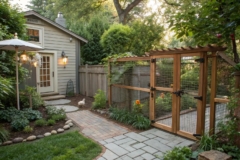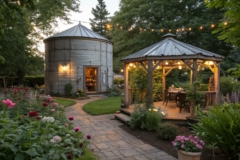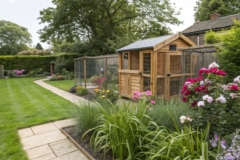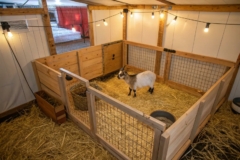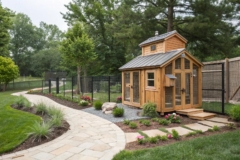1. Eco-Friendly Wooden Brooder
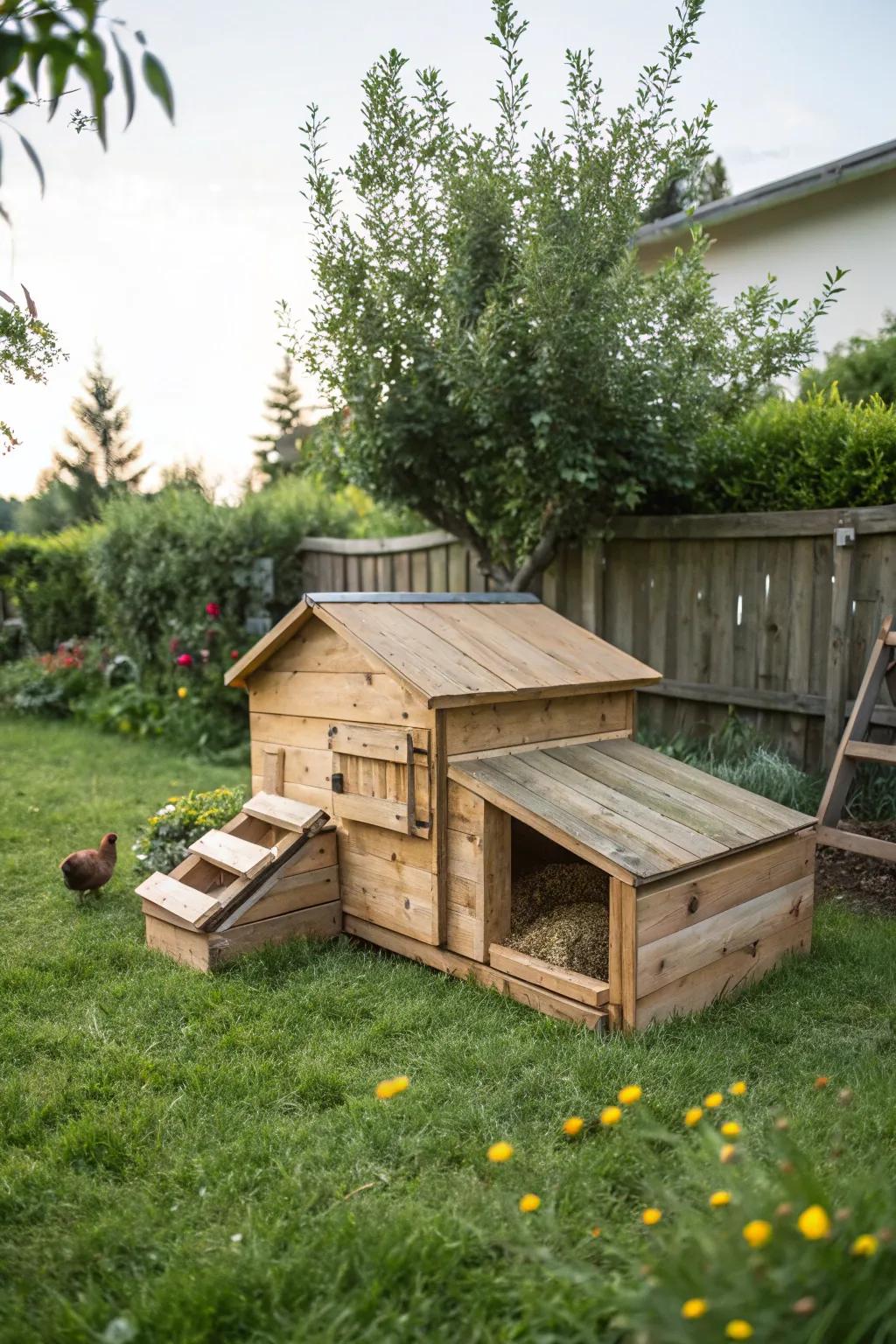
Craft a brooder from reclaimed wood for an eco-friendly and rustic look. I’ve found using scrap wood not only saves money but also adds a personal touch to my projects.
Explore these options:
- Reclaimed Wood Panels: Add charm and sustainability to your coop with reclaimed wood panels for a rustic look.
- Non-Toxic Wood Sealant: Protect your brooder with eco-friendly, non-toxic wood sealant for long-lasting durability.
- Solar-Powered Coop Light: Enhance your brooder with a solar-powered light, perfect for sustainability-minded chicken keepers.
2. Dog Crate Conversion
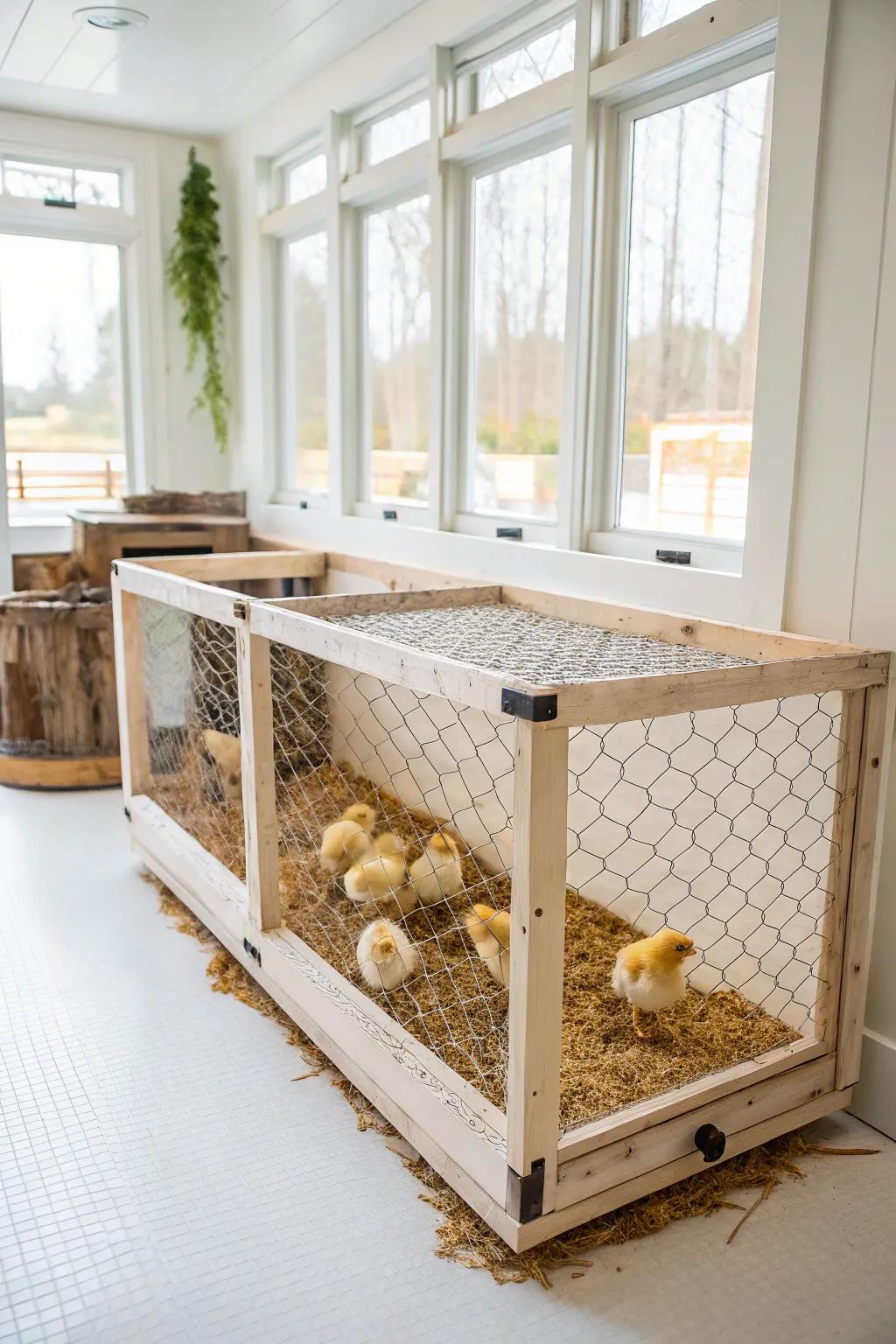
Turn a large dog crate into a brooder by wrapping it with chicken wire to keep your chicks secure. This was one of my first creative projects, and it worked like a charm!
A few things you might like:
- Large Dog Crate: Upgrade your brooder with a spacious dog crate; perfect for keeping your chicks safe.
- Chicken Wire Mesh: Secure your chicks with durable chicken wire, ensuring their protection and comfort.
- Heat Lamp for Chicks: Keep your chicks warm and cozy with a reliable heat lamp for optimal brooding.
3. Rabbit Hutch Conversion
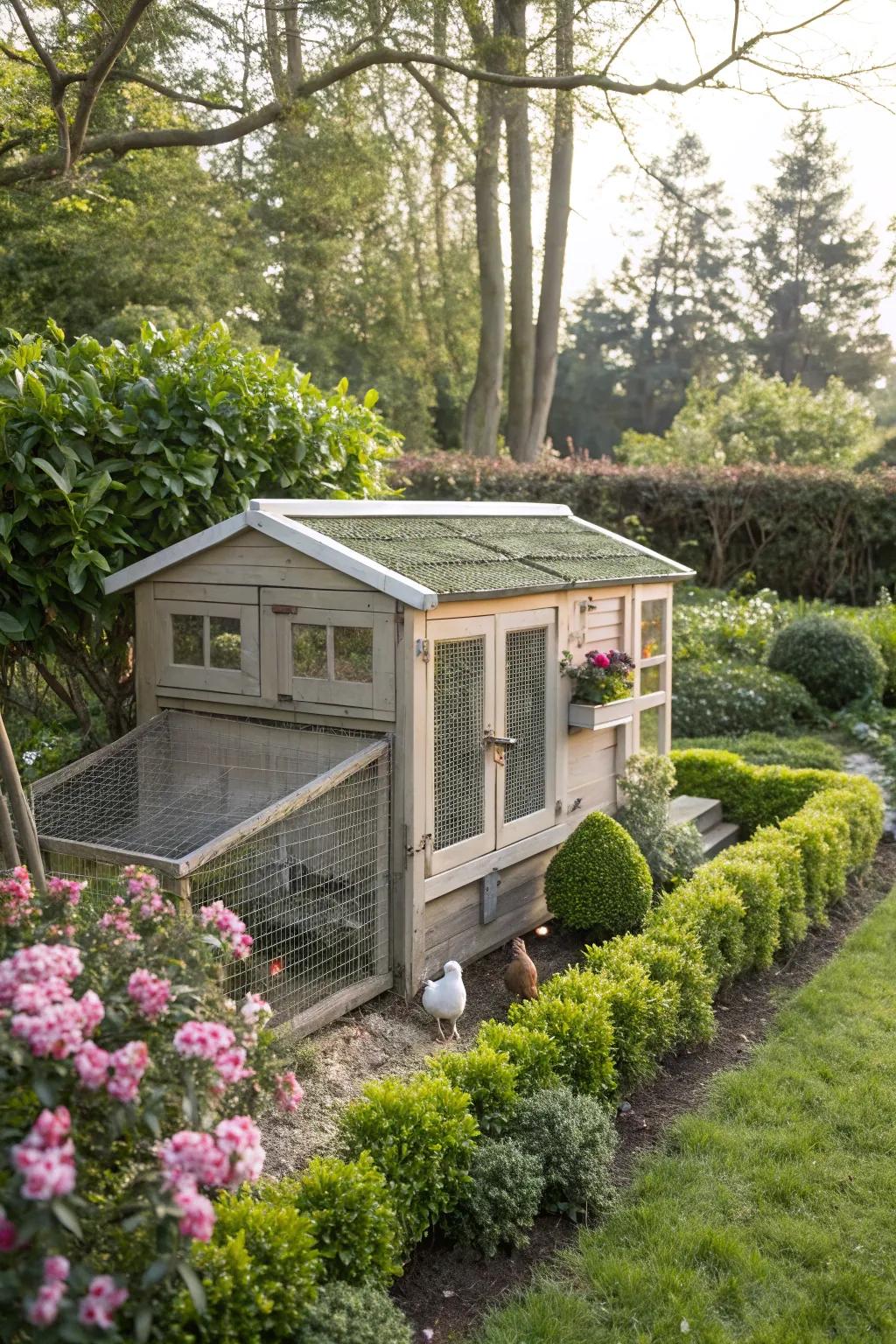
A rabbit hutch can be easily modified into a chick brooder with added insulation. I’ve seen this work wonders in keeping chicks snug and secure.
Give these a look:
- Insulation panels for animal housing: Enhance hutch warmth and comfort by installing easy-to-fit insulation panels today.
- Chick-safe waterer system: Provide fresh water for your chicks with a spill-proof, easy-access waterer.
- Heavy-duty rabbit hutch locks: Secure your converted hutch with reliable heavy-duty locks for peace of mind.
4. Brooder Corral
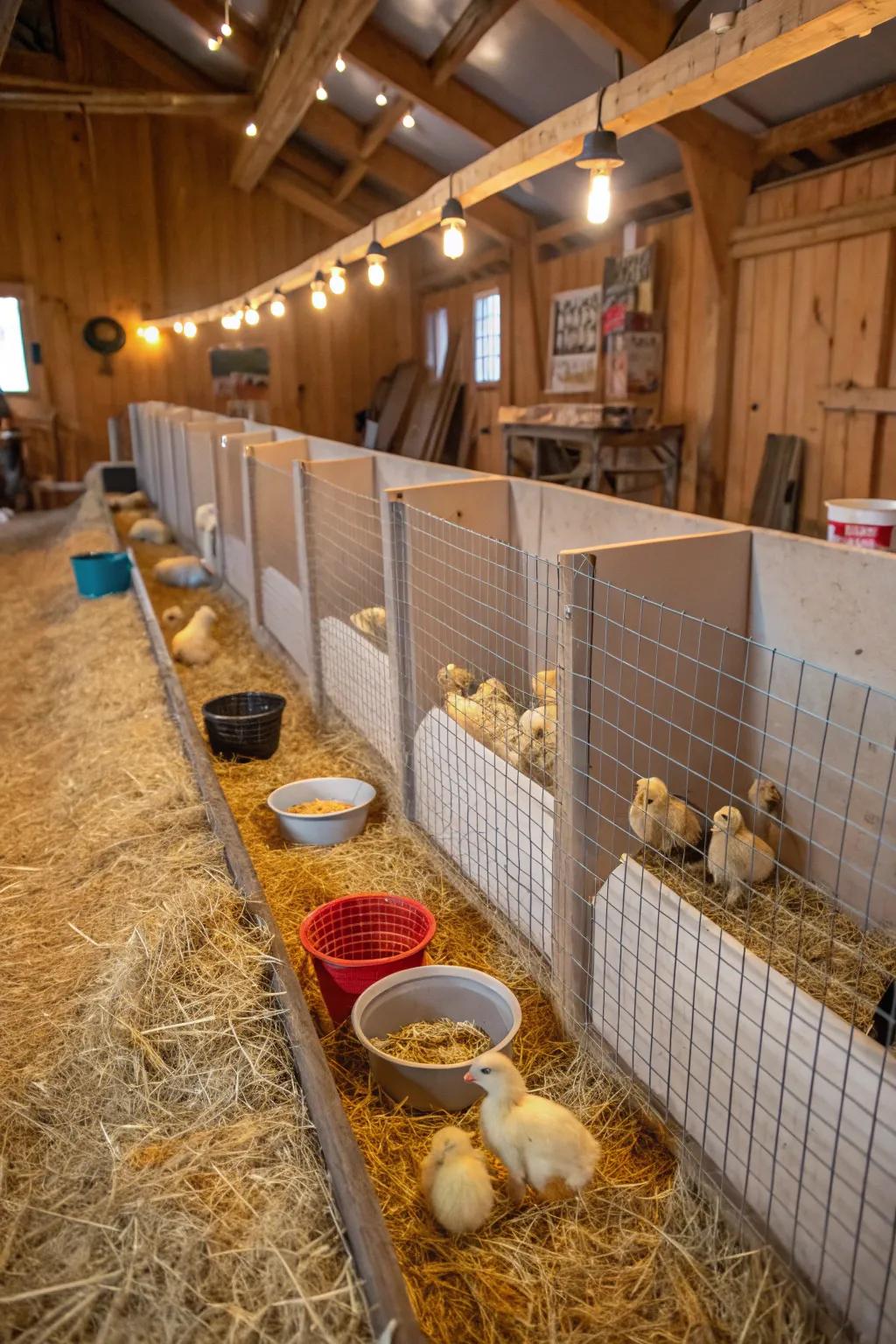
Create a brooder corral using connected panels for a flexible setup. I’ve found this approach allows easy adjustments as your chicks grow.
Possibly handy products:
- Modular Metal Panels for Poultry: Ensure a flexible setup with modular metal panels. Adjust easily as your chicks grow.
- Adjustable Heat Lamps for Brooders: Keep your chicks warm and cozy with adjustable heat lamps designed for brooders.
- Chick Feeder and Waterer Set: Provide easy access to food and water with this convenient feeder and waterer set.
5. Outdoor A-Frame Coop

Build an A-frame coop for a stable, weather-resistant enclosure. I appreciate its simple design and how effectively it blends into any garden setting.
Try these:
- Weatherproof Wood Sealant: Protect your coop from rain and rot. Ensure durability with this easy-to-apply sealant.
- Heavy-Duty Wire Mesh: Secure your coop with durable wire mesh against predators and ensure ventilation.
- Outdoor Chicken Feeder: Keep your chickens nourished with an easy-to-fill and clean outdoor feeder.
6. Portable Chicken Tractor

A portable chicken tractor offers mobility and fresh foraging opportunities for your chicks. I love how this design lets me rotate their grazing spots effortlessly.
Some handy options:
- Heavy-Duty Chicken Tractor Wheels: Upgrade your chicken tractor with durable wheels for easy movement and better terrain handling.
- Portable Chicken Coop Waterer: Ensure constant hydration for your chicks with a reliable, portable water dispenser.
- Weatherproof Chicken Coop Tarp: Protect your chickens from rain and sun with a durable, weather-resistant tarp cover.
7. Plastic Tote Brooder
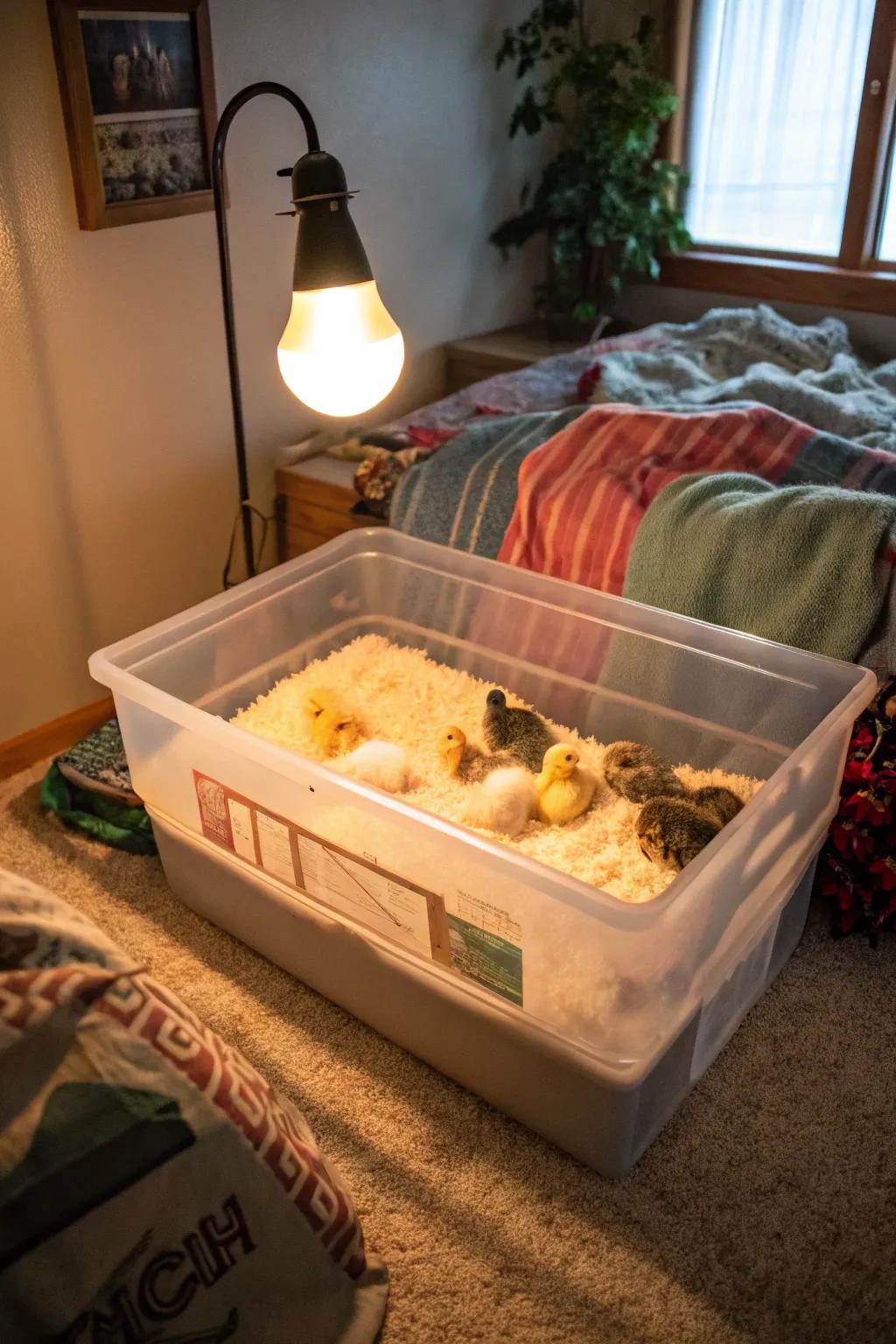
A large plastic tote makes a fantastic brooder for your chicks, thanks to its ease of cleaning and durability. I always start with one of these before transitioning them to a larger space.
Items that may come in handy:
- Large Clear Plastic Storage Tote: Choose a spacious plastic tote to provide a safe and clean brooding environment for chicks.
- Heat Lamp with Clamp: Add a heat lamp with a sturdy clamp to keep your chicks warm and comfortable.
- Pine Shavings for Bedding: Use pine shavings as bedding for excellent absorbency and odor control in your brooder.
8. Vintage Cooler Brooder
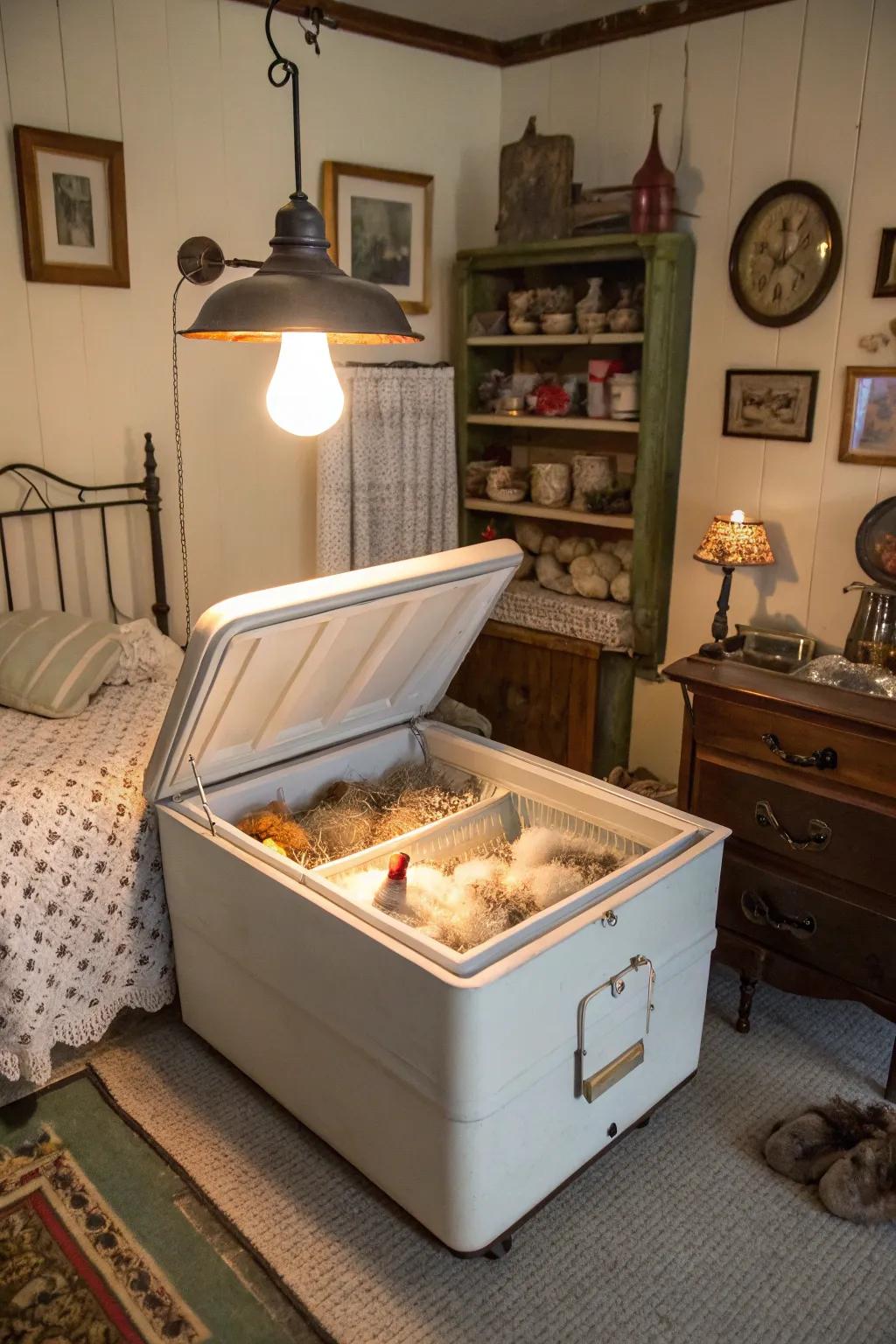
Repurpose a large vintage cooler by removing the lid for a charming brooder. This idea brings a bit of nostalgia while providing a unique home for chicks.
A few choices to try:
- Heat Lamp for Brooders: Keep your chicks warm with a reliable heat lamp. Ensure their comfort in your brooder.
- Chick Starter Feed: Provide essential nutrition with quality chick starter feed. Support healthy growth from day one.
- Brooder Thermometer: Monitor temperature effectively with an accurate brooder thermometer. Ensure the ideal environment for chicks.
9. Old Cabinet Brooder
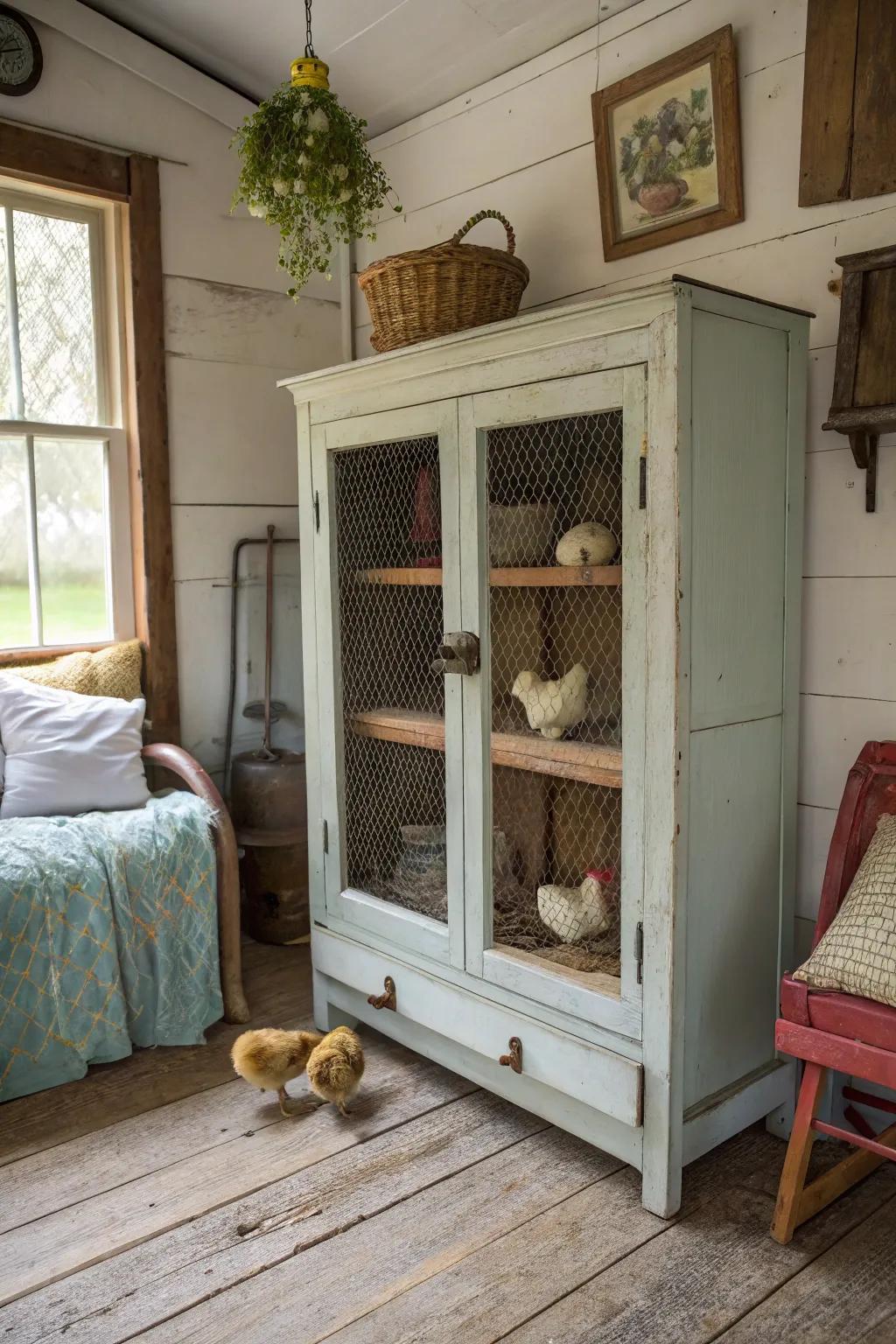
Convert an old cabinet into a cozy brooder by adding mesh and ventilation. This upcycling project is not only functional but adds charm to your space.
These products might help:
- Mesh Wire: Add durable mesh wire for ventilation and safety, ensuring your chicks stay secure and comfortable.
- Temperature Controller: Maintain the perfect environment by installing an easy-to-use temperature controller in your brooder.
- Low Wattage Heating Lamp: Provide essential warmth with a low wattage heating lamp designed for safe chick care.
10. Swimming Pool Brooder
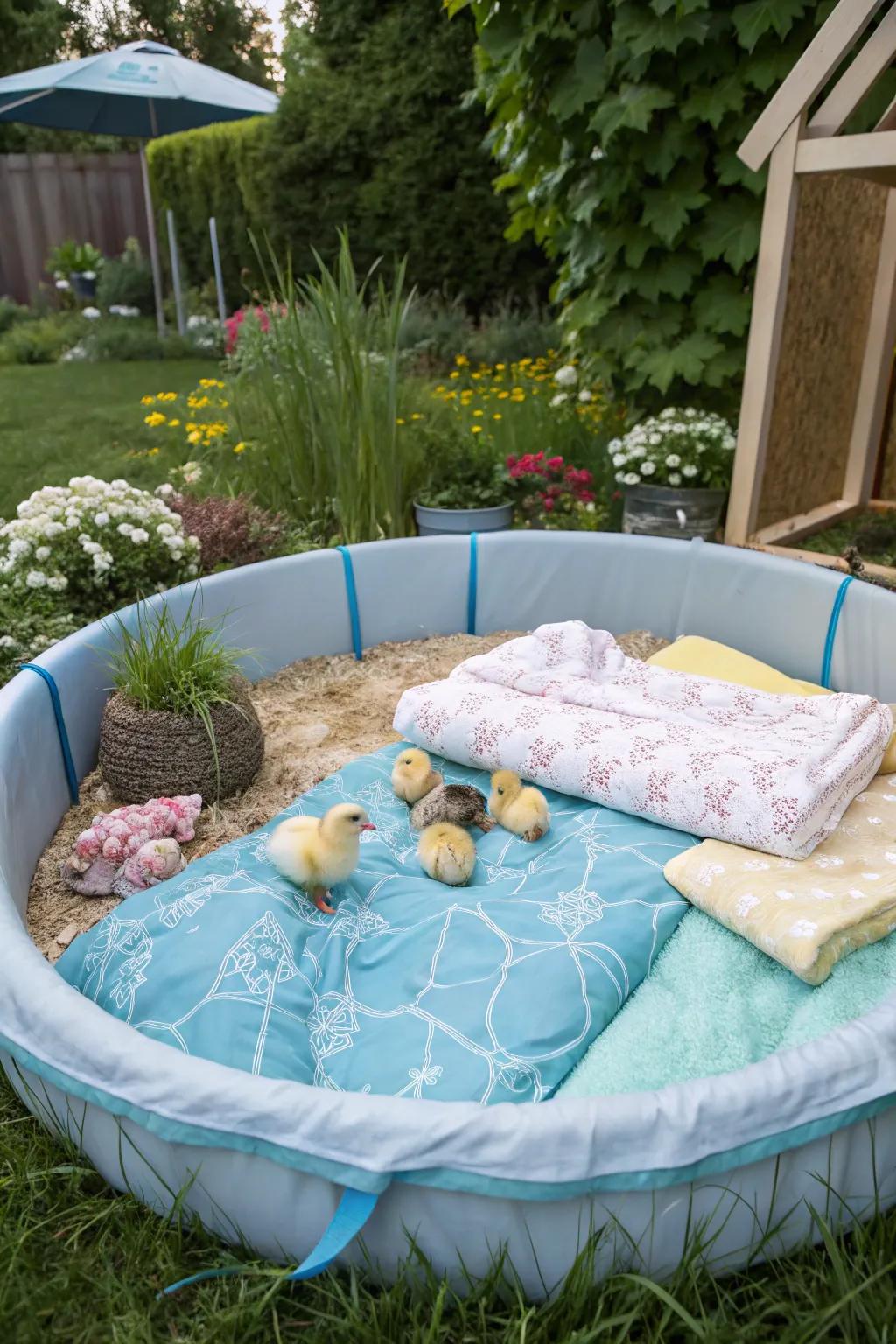
A plastic children’s swimming pool is an unexpected but effective brooder, offering plenty of space for ducklings or chicks to roam. I enjoy how easy it is to clean and maintain.
These products might be useful:
- Plastic Children’s Swimming Pool: Get a spacious plastic pool for chicks to play and grow comfortably. Easy to clean!
- Chick Heating Plate: Ensure your chicks stay warm and cozy with an efficient heating plate. Simple setup!
- Pine Shavings Bedding: Provide a soft and absorbent bedding for chick comfort. Easy to replace and maintain!
11. Repurposed Bookshelf Brooder
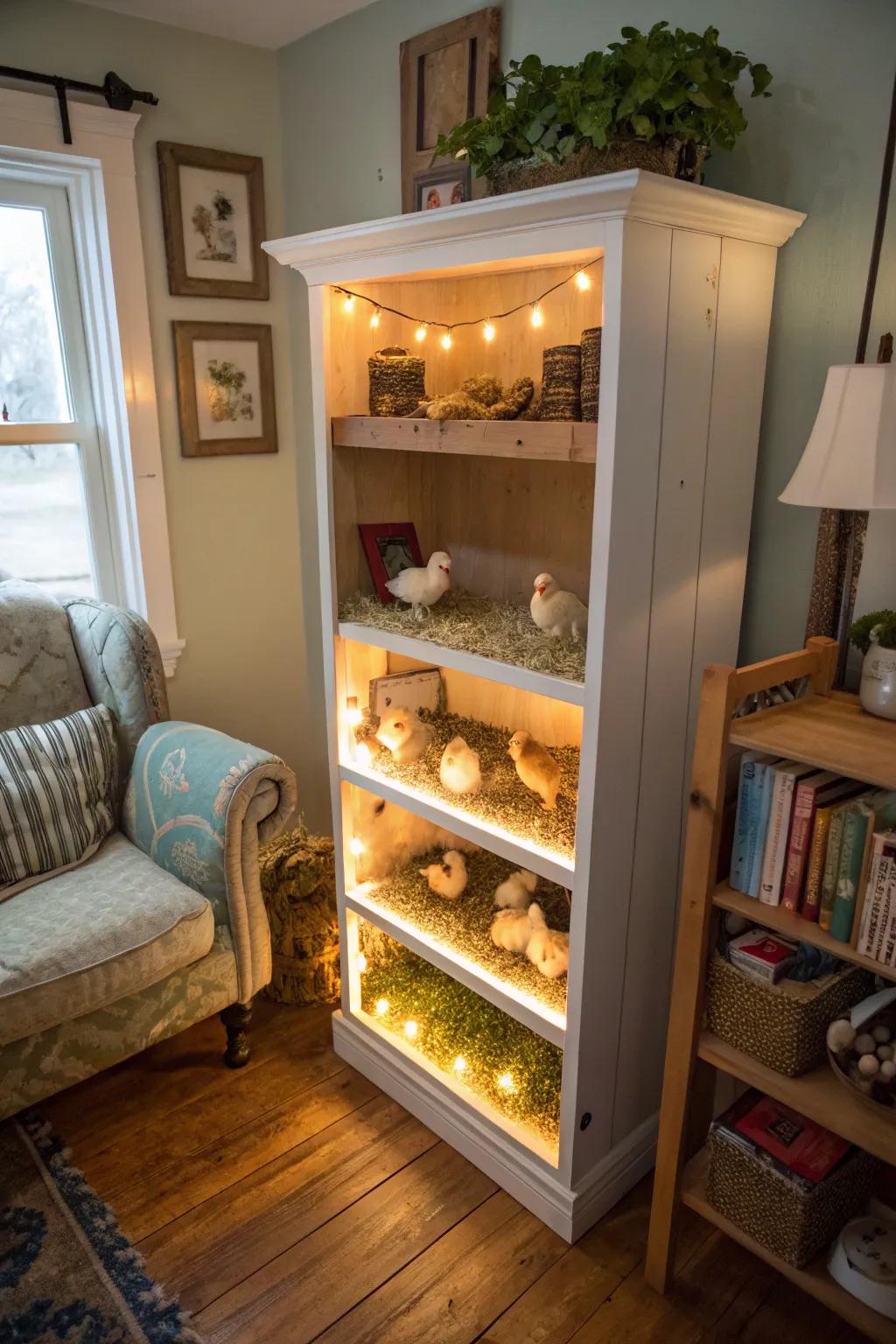
An old bookshelf can be creatively repurposed into a tiered brooder. I love how this vertical approach saves space while accommodating multiple chicks.
Check if these fit your needs:
- LED String Lights: Illuminate your brooder efficiently and stylishly with LED string lights for a warm, cozy glow.
- Chicken Bedding: Ensure comfort for your chicks with soft, absorbent bedding, perfect for small brooders.
- Mini Waterer for Chicks: Provide easy access to water and maintain hydration with a compact waterer ideal for chicks.
12. Water Trough Brooder
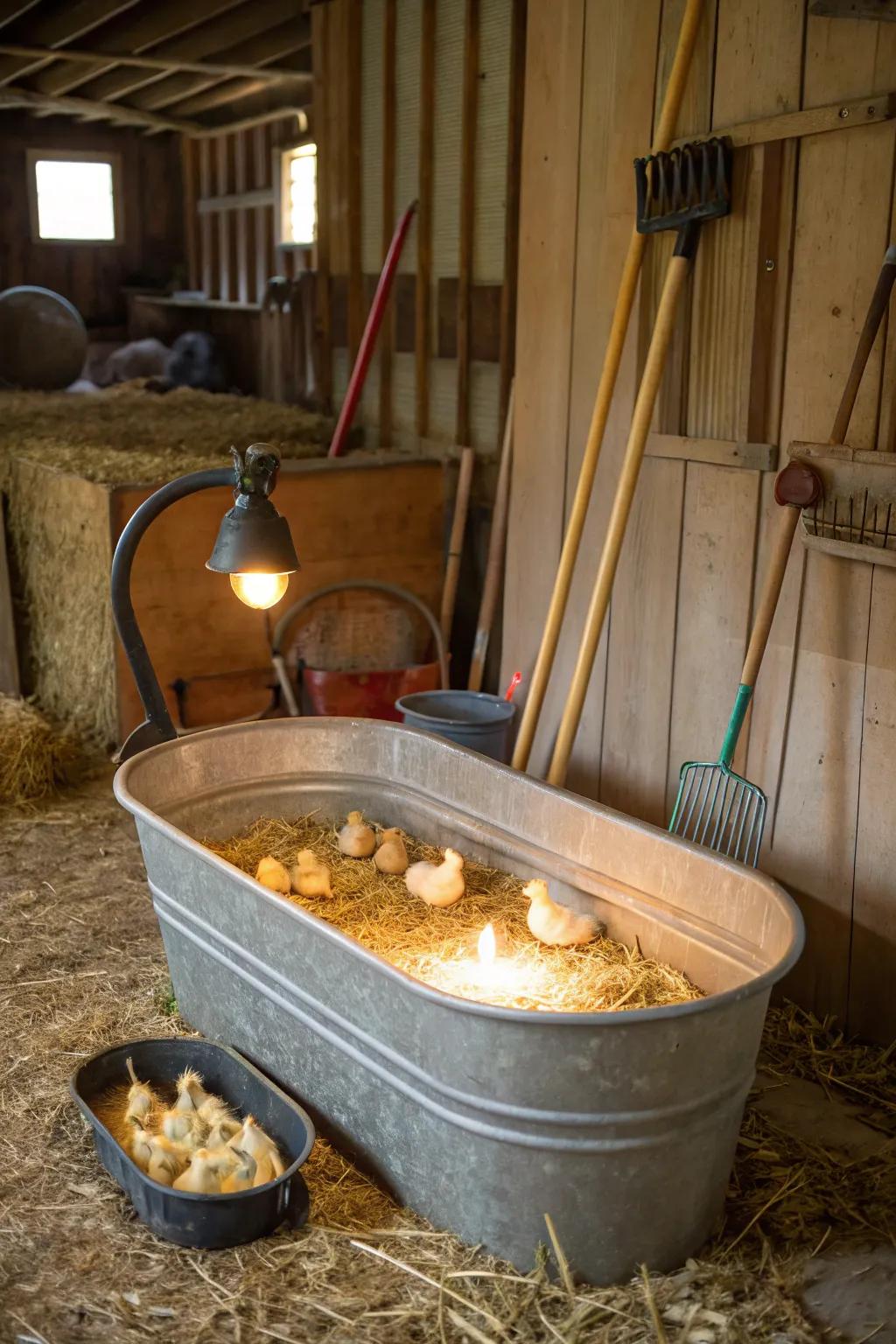
A metal water trough offers durability and ample space, ideal for those with larger flocks. I appreciate how this setup keeps everything contained and tidy.
You might give these a try:
- Adjustable Brooder Lamp: Provide essential warmth to your chicks with a durable and adjustable brooder lamp.
- Chicken Brooder Thermometer: Maintain the perfect temperature for your brooder with this easy-to-read thermometer.
- Chick Feeder and Waterer Set: Keep your chicks well-fed and hydrated with this convenient feeder and waterer set.
13. Greenhouse Coop
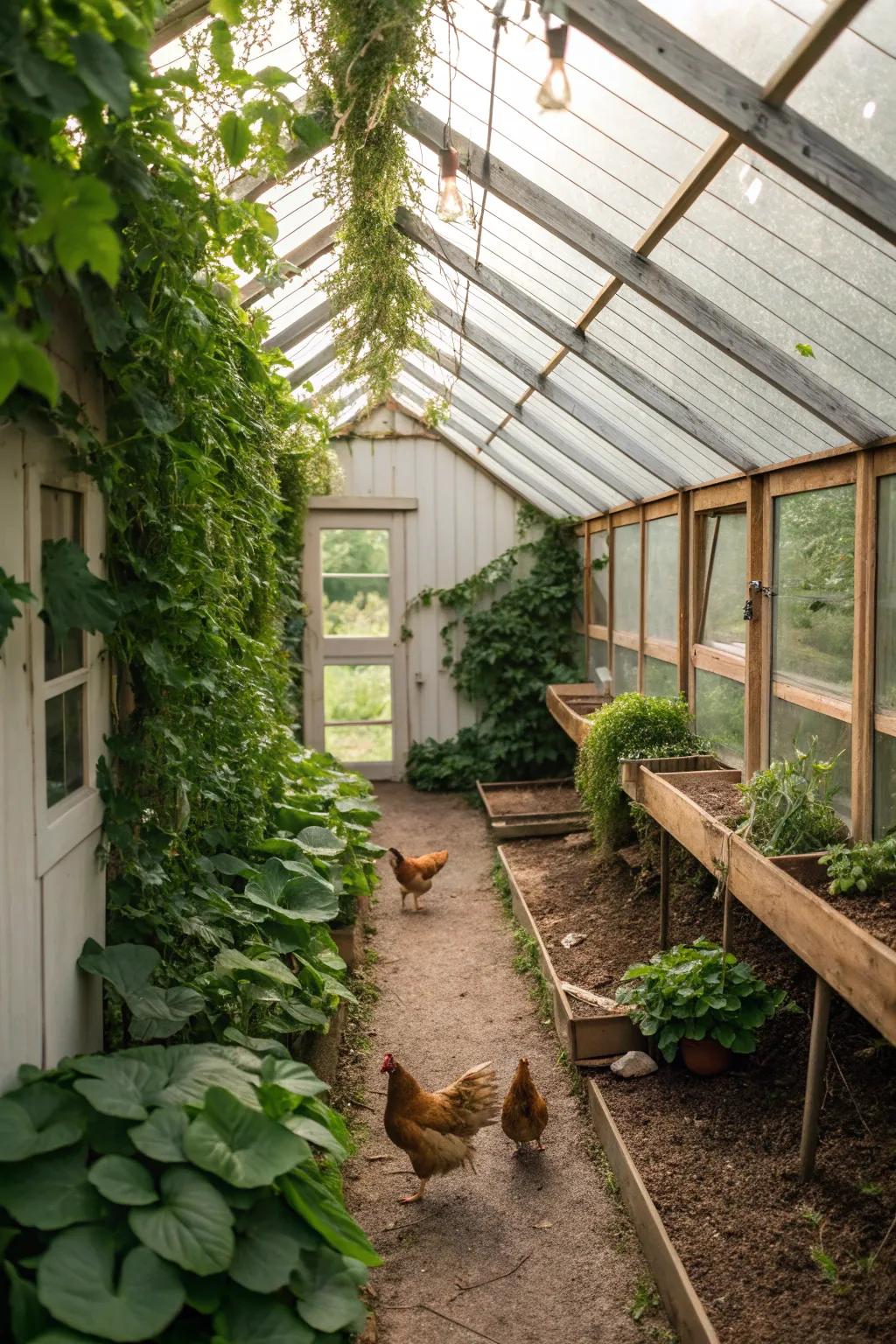
Transform a small greenhouse into a light-filled coop for a warm environment. It’s a fantastic way to utilize space and keep chicks cozy.
Consider these options:
- Solar-Powered Coop Lighting: Illuminate your coop sustainably with solar lighting, ensuring a warm, well-lit environment for your chicks.
- Chicken Coop Thermometer: Keep track of your coop’s temperature and ensure a cozy environment for your baby chicks.
- Automatic Chicken Feeder: Provide consistent feeding with ease using an automatic feeder, perfect for your greenhouse coop setup.
